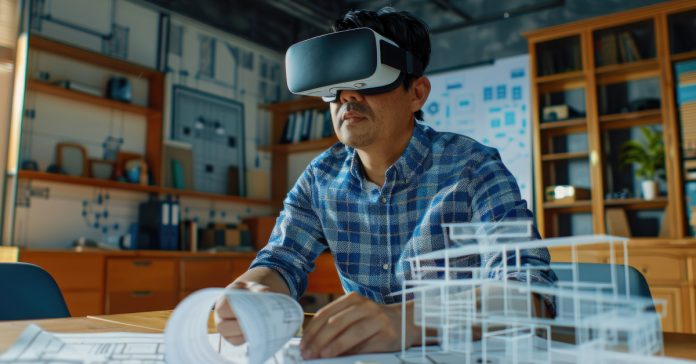Digital twin technology is revolutionizing aerospace and industrial sectors by enabling businesses to create dynamic virtual models of physical assets, processes, and systems. These high-fidelity replicas receive real-time data from their real-world counterparts, allowing companies to simulate, monitor, and optimize performance continuously. This unprecedented visibility and control accelerate innovation, reduce costs, and improve safety across complex engineering landscapes.
Understanding the Digital Twin Concept
A digital twin is not just a static 3D model but a living virtual replica embedded with real-time data inputs from sensors and IoT devices. It integrates operational data, environmental factors, and historical analytics to provide a holistic picture of a system’s current state and potential future behavior. Advances in artificial intelligence (AI), machine learning, and big data analytics enhance these models’ predictive capabilities.
By allowing virtual testing and scenario simulations, digital twins minimize risks associated with physical prototyping or trial-and-error. This digital-first approach optimizes design, manufacturing, and maintenance activities in aerospace and industrial environments where precision and reliability are paramount.
Driving Aerospace Innovation with Digital Twins
The aerospace industry exemplifies the transformative potential of digital twin technology due to its high complexity, stringent safety requirements, and costly development cycles.
Accelerated Design and Virtual Prototyping
Traditionally, aircraft development involves labor-intensive physical prototypes and time-consuming testing. Digital twins allow engineers to create virtual aircraft models that simulate aerodynamics, structural integrity, and system performance. This enables rapid iteration of designs with far fewer physical builds, slashing both time and cost.
Leading aerospace companies like Airbus simulate manufacturing workflows, tooling, and supply chains within digital environments to predict production outcomes. This holistic simulation streamlines processes and enhances collaboration across design, production, and operational teams.
Predictive Maintenance and Fleet Optimization
Once an aircraft is in service, its digital twin evolves through continuous data streaming from onboard sensors. Connected platforms collect thousands of data points related to engine performance, environmental conditions, and mechanical wear. AI algorithms analyze this data to predict failures before they occur, enabling proactive maintenance scheduling that reduces downtime and extends component life.
For example, Airbus’ Skywise platform connects over 12,000 aircraft digital twins, helping more than 50,000 users worldwide optimize fleet management and safety. This data-driven maintenance revolution improves availability, lowers costs, and enhances passenger confidence.
Environmental and Operational Efficiency
Digital twins help engineers optimize aircraft fuel consumption by simulating aerodynamic improvements and operational adjustments. Virtual replicas detect drag hotspots and airflow disruptions, allowing designers to enhance wing shapes and reduce emissions. These innovations contribute to sustainability goals while maintaining high performance standards crucial for the aerospace sector.
Transforming Industrial Operations with Digital Twin Solutions
Beyond aerospace, digital twins are advancing industrial operations—from manufacturing plants to energy infrastructure—by driving efficiency, safety, and innovation.
Process Simulation and Workflow Optimization
Industrial digital twins enable manufacturers to replicate entire production lines virtually. By simulating logistics, machinery behavior, and process flows, companies can identify bottlenecks and inefficiencies before they impact real-world operations. This foresight allows continuous refinement of workflows, reducing waste and maximizing throughput.
Connected devices and AI-powered analytics provide real-time feedback to monitor equipment health and production quality. For example, Siemens collaborates with aerospace startups to develop AI-driven digital twin factories that optimize layout design and predict machine failures, minimizing downtime.
Enhanced Asset Lifecycle and Safety Management
Digital twins play a key role in asset lifecycle management by monitoring wear and environmental conditions remotely. With detailed insight into operating conditions, companies can extend machinery life through timely interventions and condition-based maintenance, reducing unplanned outages.
Simulated hazardous scenarios within the digital twin environment improve safety by allowing managers to test emergency protocols and train personnel without physical risks. This proactive approach helps maintain compliance with strict industrial safety standards and protects workers on-site.
Energy and Resource Optimization
In industries like energy and utilities, digital twins integrate sensor data to optimize power generation, distribution, and consumption. By simulating complex grid networks or plant operations, these models identify opportunities for energy savings and help minimize environmental impact, a top priority for modern industrial strategy.
The Synergistic Power of AI and IoT
The convergence of AI and IoT dramatically enhances digital twin capabilities. IoT sensors provide continuous streams of operational data, keeping digital twins synchronized with their physical counterparts. AI algorithms process this data to detect anomalies, predict maintenance windows, and recommend optimizations.
This combination not only improves decision-making speed but also enables autonomous adjustments. For instance, industrial equipment equipped with AI-powered digital twins can self-correct parameters in real-time to maintain optimal performance and prevent damage.
Case Examples of Digital Twin Success
- Airbus: Uses digital twins to simulate aircraft production and operations, enabling predictive maintenance and reducing downtime across a fleet of thousands of planes.
- Rolls-Royce: Develops engine digital twins that analyze performance data and forecast engine wear, enhancing reliability and safety.
- Lockheed Martin: Implements digital twins for advanced fighter jets to optimize component design and validate aerodynamics without costly physical wind tunnel testing.
- Vancouver International Airport: Adopted a digital twin to optimize maintenance and safety while working toward net-zero carbon emissions, showcasing real-world airport applications.
- Siemens: Partners with aerospace startups for creating full-scale digital twin factories, improving layouts and maintenance through AI-driven simulations.
Preparing for the Future
Digital twin technology is rapidly becoming indispensable in aerospace and industrial fields. Companies adopting it today gain a competitive edge through shorter development cycles, reduced operational risks, and enhanced sustainability. Industry leaders forecast a market growth exceeding $70 billion by 2030, driven by continuous digitalization demand.
Regulatory frameworks will evolve to ensure safety and compliance as AI-powered digital twins assume more autonomous functions. The successful integration of digital twin solutions requires investments in data infrastructure, skilled talent, and cross-disciplinary collaboration.
Conclusion
Digital twin solutions are catalysts for innovation in aerospace and industrial operations by bridging the physical and digital worlds. They empower stakeholders to design smarter, operate safer, and optimize resource usage efficiently. As these technologies mature, their adoption will define the next frontier of operational excellence and sustainable growth.

